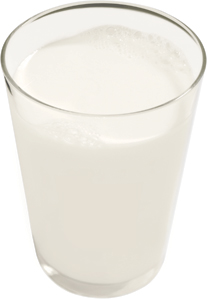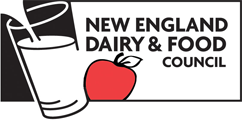 Dairy Myth Busters
Dairy Myth Busters
 Food myths can lead to the omission of important nutrients in the diet. That’s why it’s important to get the facts about the foods you love- like dairy! We’ve identified a few common milk myths that we’d like to clear up. Got another food-ism you want fact checked? Contact one of our nutrition specialists and we’ll be happy to answer your questions. Here are some common milk myths- debunked!
Food myths can lead to the omission of important nutrients in the diet. That’s why it’s important to get the facts about the foods you love- like dairy! We’ve identified a few common milk myths that we’d like to clear up. Got another food-ism you want fact checked? Contact one of our nutrition specialists and we’ll be happy to answer your questions. Here are some common milk myths- debunked!
Dairy Myth Busters
Busted: There is no conclusive evidence that organic milk is superior to regular milk in safety or nutrition. Organic milk and regular milk both contain nine essential nutrients that make dairy an important part of a healthy diet. So whether you choose conventional or organic, you’re doing the body good by choosing milk!
Busted: Milk and milk products provide a wealth of nutrition benefits. But unpasteurized or raw milk can harbor dangerous microorganisms that can pose serious health risks to you and your family including tuberculosis, listeria and salmonella.
Busted: Those who are lactose intolerant don’t have to miss out on the great taste and health benefits of dairy. Different people can handle different amounts of lactose, and there’s a solution to meet most needs in the dairy case – from lactose-free milk to dairy foods that are typically easier to digest like hard cheeses and yogurt.
Busted: Rice, almond, and soy beverages contain a different set of nutrients than cow’s milk. These beverages are often fortified with a few key nutrients, but lack many of the vitamins and minerals found naturally in cow’s milk. Not only is cow’s milk packed with calcium, it contains eight other essential nutrients, including vitamin D, vitamin A, and potassium. Milk is a source of high quality protein, providing 8 grams of protein per cup. Alternative beverages, such as almond, coconut, and rice, have only a small amount of protein.
Busted: At just 25 cents per eight-ounce glass, milk provides twice as many nutrients and vitamins as soft drinks and juices.
Busted: The body of research to date does not show cause and effect that diet or any particular food causes acne. In fact, according to the American Academy of Dermatology, a balanced, nutrient-rich eating plan can help keep skin healthy. And dairy foods, like low-fat and fat-free milk, cheese and yogurt, are an important part of a healthy eating plan, providing a unique package of nine essential nutrients. Removing dairy foods, or any food group for that matter, from your eating plan can actually have a negative impact on nutrient consumption.
Busted: Some fruits, vegetables and legumes do contain naturally occurring calcium. The amount of calcium in an 8oz glass of milk is 300mg or 1/3 of the daily recommended amount. To obtain that same amount of calcium, you would need to eat 18 oranges per day, or 9 cups of cooked leafy greens per day, or 8 cups of cooked pinto beans daily. Not only does dairy contain the most calcium out of any food, but it also has Vitamin D to help the body absorb calcium.
All milk whether produced on a conventional or organic dairy farms does not contain antibiotics. Much like humans, sometimes dairy cows require antibiotics to treat an illness. Milk from a cow being treated with antibiotics is separated from other cow’s milk on the farm. The milk from this cow is allowed to be sold only after the antibiotics have cleared the cow’s system. Milk is strictly tests, both on the farm and at the processing plant. Any milk that tests positive for antibiotics at any point is disposed of immediately and does not get into the food supply.
Busted: Milk, including flavored milk, contains 9 essential nutrients that are important for growth and development. Flavored milk accounts for less than 3.5% of added sugar intake in children ages 6-12 and less than 2% in teens.
